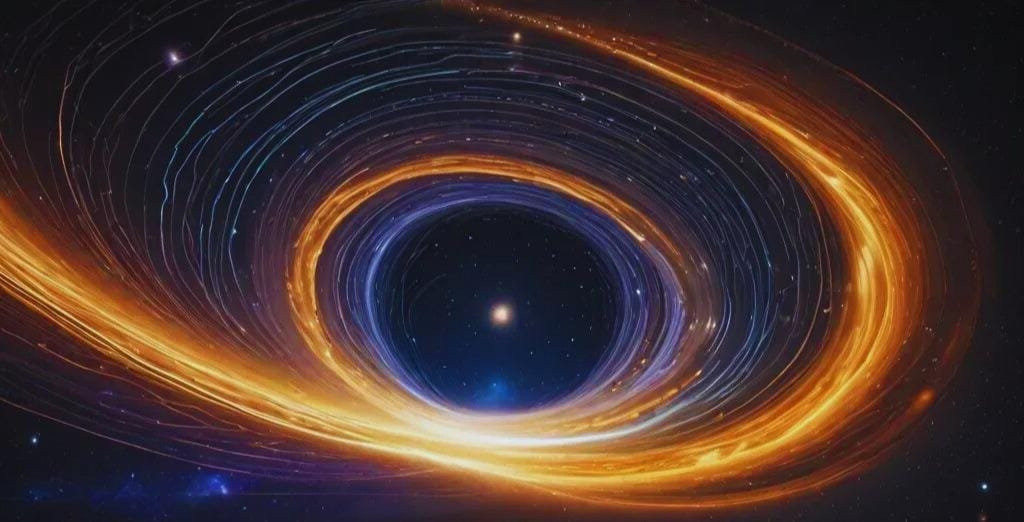In the vast expanse of our universe, where celestial bodies flicker like distant beacons, there exist extraordinary cosmic objects that have revolutionized our understanding of physics, astronomy, and our place among the stars. Pulsars—rapidly rotating neutron stars that emit beams of electromagnetic radiation—stand as testament to nature’s capacity for extraordinary precision and mind-bending extremes. Their discovery ranks among the most significant astronomical breakthroughs of the 20th century, unfolding through a combination of serendipity, meticulous observation, and the unheralded brilliance of a young graduate student named Jocelyn Bell Burnell.
The Accidental Discovery: How Astronomy Changed Forever

The story begins in 1967 at Cambridge University, where a massive radio telescope sprawled across a field like a bizarre metal garden. Radio astronomer Antony Hewish had designed this antenna array to study quasars, but it was his graduate student, Jocelyn Bell, who noticed something peculiar in the data: a strange, persistently regular signal that appeared each night in exactly the same position in the sky. “Little Green Men” (LGM) they jokingly called it initially—half in jest, half in wonder—contemplating the remote possibility of an alien intelligence beaming signals toward Earth.
What Bell had discovered, however, was something even more extraordinary than extraterrestrial communication. These precisely timed radio pulses—arriving every 1.33 seconds—emanated from what we now recognize as a pulsar, the first of thousands subsequently identified throughout our galaxy. The object, officially designated PSR B1919+21, became the cornerstone of an entirely new field of astrophysical study.
Shockingly, Bell’s pivotal contribution was initially overshadowed when the 1974 Nobel Prize in Physics went to Hewish and radio astronomer Martin Ryle, leaving Bell’s name conspicuously absent—a decision that continues to stir controversy within the scientific community to this day.
Nature’s Perfect Timepieces: The Physics of Pulsars

How can a star possibly emit such perfectly timed pulses? The answer lies in extreme physics that defies everyday intuition.
When a massive star dies in a supernova explosion, its core may collapse into an incredibly dense neutron star—essentially a city-sized sphere of neutrons so tightly packed that a teaspoonful would weigh billions of tons. These neutron stars spin rapidly, sometimes hundreds of times per second, while powerful magnetic fields channel radiation into beams emanating from their magnetic poles.
Picture a cosmic lighthouse: as the star rotates, these beams sweep across space like searchlights. Each time a beam crosses our line of sight—flash!—we detect a pulse of radiation. The remarkable precision of these pulses stems from the neutron star’s nearly perfect spherical shape and immense inertia, making pulsars the most accurate natural clocks in the universe, rivaling atomic clocks in their stability.
Millisecond pulsars, spinning at breathtaking rates up to 716 times per second, represent an even more extreme category. How can something the mass of our sun rotate faster than a kitchen blender without tearing itself apart? The answer involves “spin-up” processes where these stellar remnants actually gain rotational energy by stealing material from companion stars—a cosmic case of stellar vampirism.
Beyond Timekeeping: The Multi-Faceted Impact of Pulsar Research

While the precision of pulsars is fascinating, their significance extends far beyond mere timekeeping. These cosmic objects have become indispensable tools across numerous scientific domains:
- Gravitational Wave Detection: Millisecond pulsars form the basis of Pulsar Timing Arrays (PTAs), galaxy-sized detectors that can sense the faint ripples in spacetime caused by supermassive black hole mergers billions of light-years away. In July 2023, astronomers announced the detection of a gravitational wave background using this technique—a watershed moment comparable to LIGO’s direct detection nearly a decade earlier.
- Testing Einstein’s Theories: The binary pulsar system PSR B1913+16, discovered by Russell Hulse and Joseph Taylor in 1974, provided the first indirect evidence for gravitational waves through its gradually decaying orbit. This remarkable finding, which earned Hulse and Taylor the 1993 Nobel Prize, confirmed Einstein’s predictions with extraordinary precision. As astronomer Joseph Taylor noted, “Nature has provided us with a laboratory that we simply couldn’t build on Earth.”
- Interstellar Navigation: Much like ancient mariners used stars to navigate the seas, future interstellar spacecraft might use pulsar signals as a galactic GPS system. NASA’s NICER experiment on the International Space Station has already demonstrated X-ray pulsar-based navigation (XNAV) principles that could one day guide missions to the outer solar system and beyond with unprecedented accuracy.
The density, magnetism, and rotational properties of pulsars also create environments where physicists can test matter under conditions impossible to replicate in terrestrial laboratories. Neutron star interiors may harbor exotic states of matter—strange quark matter, superfluid neutrons, or other forms predicted but never directly observed—making them cosmic laboratories for extreme physics.
The Human Element: Drama, Controversy, and Perseverance

The human stories surrounding pulsar research illuminate the complex interplay of brilliance, perseverance, and occasional institutional shortcomings that characterize modern science. Jocelyn Bell Burnell’s exclusion from the Nobel Prize exemplifies what many view as historical gender bias in scientific recognition—an issue that continues to reverberate. As Bell herself has repeatedly emphasized, “science is done by people,” complete with all their flaws, biases, and exceptional capacities for discovery.
In a remarkable display of generosity and commitment to diversity, Bell Burnell donated the entire $3 million from her 2018 Breakthrough Prize to fund scholarships for underrepresented groups in physics. Her explanation was characteristically straightforward: “I don’t need a new dress or a new car, and I certainly wouldn’t know how to spend £2.3m.”
The pulsar story also illustrates how technological advances drive scientific discovery. The original Cambridge radio telescope that detected the first pulsar was cutting-edge technology for its time. Today, facilities like the Five-hundred-meter Aperture Spherical Telescope (FAST) in China and the Square Kilometre Array (SKA) under construction across Australia and South Africa promise to reveal thousands more pulsars, potentially including the holy grail—a pulsar orbiting a black hole, which would provide unprecedented tests of general relativity.
Contemporary Frontiers: Fast Radio Bursts and Beyond
While pulsars emit regular, predictable signals, their mysterious cousins—Fast Radio Bursts (FRBs)—produce brief, incredibly powerful flashes that can outshine entire galaxies for milliseconds. First detected in 2007, these enigmatic bursts have been traced to distant galaxies, though their exact origins remain contested. Leading theories involve magnetars (extremely magnetized neutron stars), though other exotic explanations persist.
The connection between FRBs and pulsars remains tantalizingly unclear. Are they related phenomena occurring under different conditions? The 2020 detection of an FRB from a known galactic magnetar (SGR 1935+2154) suggests a link, yet many questions linger. This evolving mystery illustrates how pulsar research continues to spawn new questions even as it answers others.
Conclusion: Beacons of Knowledge in a Vast Cosmos
From their serendipitous discovery to their multifaceted applications in fundamental physics, cosmology, and potential future technologies, pulsars exemplify how seemingly esoteric astronomical phenomena can profoundly impact our understanding of the universe and inspire technological innovation. Their story—a narrative encompassing Nobel prizes, missed recognition, groundbreaking physics, and the persistent human drive to understand the cosmos—continues to unfold as new observations and theoretical insights emerge.
As we peer deeper into the cosmos with increasingly sophisticated instruments, pulsars remain among our most reliable cosmic guides—celestial beacons illuminating paths toward answers about gravity, matter under extreme conditions, and perhaps even how to navigate the vast interstellar voids. The regular pulses from these stellar remnants, crossing light-years of space before reaching our detectors, connect us to some of the most extraordinary environments in our universe.
In the words of astrophysicist Dame Susan Jocelyn Bell Burnell herself: “The more we learn, the more we realize there is to know.” Pulsars, with their precision, extremes, and remaining mysteries, continue to embody this fundamental truth about science and human curiosity.
Frequently Asked Questions (FAQ)
Q: What exactly is a pulsar?
A: A pulsar is a highly magnetized, rotating neutron star that emits beams of electromagnetic radiation from its magnetic poles. As the star rotates, these beams sweep across space like lighthouse beams. When one of these beams points toward Earth, we detect a pulse of radiation—hence the name “pulsar” (pulsating star). Neutron stars form after massive stars explode as supernovae, leaving behind an incredibly dense core where a mass greater than our sun is compressed into a sphere roughly 20-25 kilometers in diameter.
Q: How fast do pulsars rotate?
A: Pulsar rotation rates vary dramatically. “Normal” pulsars typically rotate between once every few seconds to a few times per second. Millisecond pulsars, however, spin far more rapidly—hundreds of times per second. The fastest known pulsar, PSR J1748-2446ad, rotates at an astonishing 716 times per second, meaning its surface moves at approximately 24% the speed of light!
Q: Why didn’t Jocelyn Bell Burnell receive the Nobel Prize for discovering pulsars?
A: The exclusion of Bell Burnell from the 1974 Nobel Prize, which was awarded to her supervisor Antony Hewish and colleague Martin Ryle, remains controversial. The Nobel committee has never explicitly explained this decision, though some have suggested it reflected cultural attitudes of the time regarding graduate students’ contributions and possibly gender bias. Bell Burnell herself has maintained a gracious perspective, noting that the recognition she’s received throughout her career—including the prestigious Breakthrough Prize in 2018—has ultimately given her more opportunities to influence science than a Nobel might have.
Q: Could pulsars be used for interstellar navigation?
A: Yes! Pulsars offer remarkable potential as navigation beacons for future deep space missions. Their extremely stable rotation rates and unique “fingerprints” (each pulsar has distinctive pulse characteristics) make them ideal natural beacons. NASA has already tested X-ray pulsar-based navigation (XNAV) with the NICER experiment on the International Space Station. Unlike GPS, which requires maintaining satellite constellations, pulsar navigation would work anywhere in the galaxy and wouldn’t require human-made infrastructure.
Q: What is the connection between pulsars and gravitational waves?
A: Pulsars contribute to gravitational wave science in two significant ways. First, binary pulsar systems provided the first indirect evidence for gravitational waves through their gradually decaying orbits, confirming Einstein’s predictions decades before direct detection was possible. Second, networks of millisecond pulsars (Pulsar Timing Arrays or PTAs) function as enormous gravitational wave detectors sensitive to very low-frequency waves produced by supermassive black hole binaries. In 2023, several PTA collaborations announced detection of a gravitational wave background—a major scientific breakthrough.
Q: Are new pulsars still being discovered?
A: Absolutely! Astronomers continue to discover new pulsars at an impressive rate. The current catalog contains over 3,000 known pulsars, but this represents only a small fraction of the estimated 100,000+ pulsars in our galaxy. New radio telescopes like FAST in China and the upcoming Square Kilometre Array will likely discover thousands more. Each newly discovered pulsar, particularly those in unusual systems (like pulsar-black hole binaries, which remain undiscovered but theoretically possible), offers potential new insights and tests of fundamental physics.

